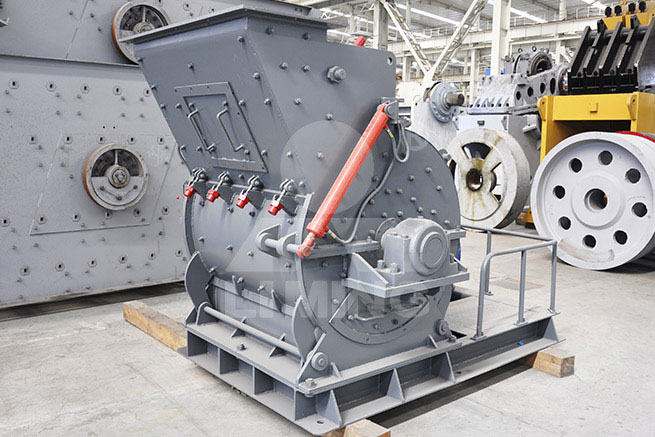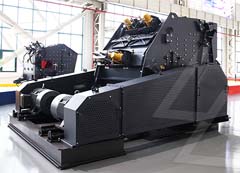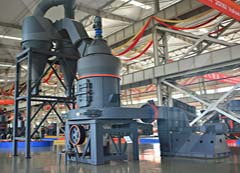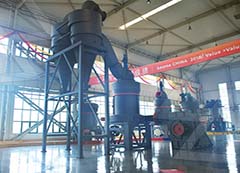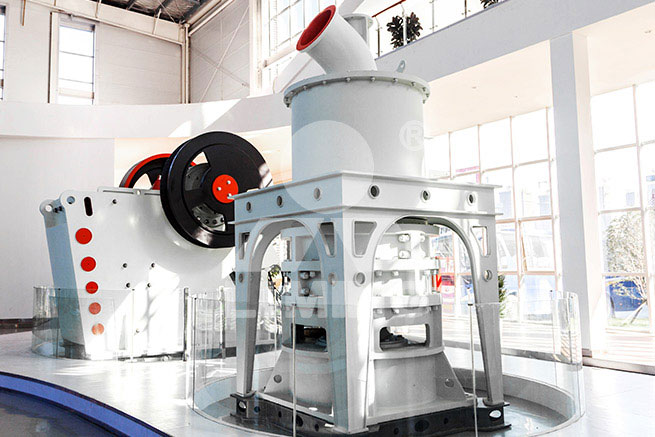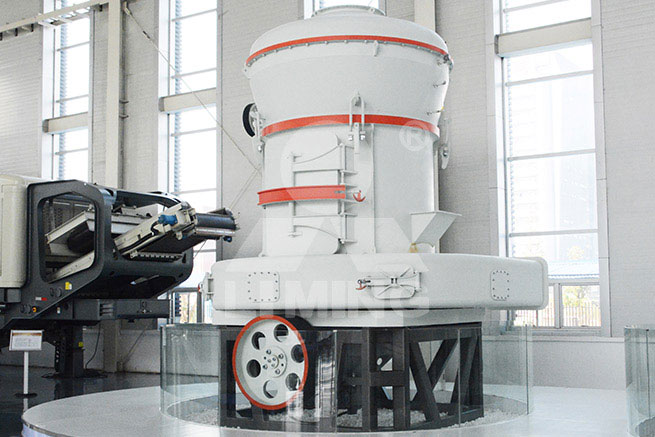raw matrial of cement process

RAW MATERIALS IN CEMENT PRODUCTION
2019-2-7 · The choice of composition of materials mixture with useful components generally is determined by plant’s geographical location and delivery of raw
Read More

CEMENT RAW MATERIALS - International Cement Review
2013-6-9 · The quality of cement clinker is directly related to the chemistry of the raw materials used. Around 80–90% of raw material for the kiln feed is limestone. Clayey raw material accounts for between 10–15%, although the precise amounts will vary. Magnesium carbonate, which may be present in limestone, is the main undesirable impurity. The level
Read More

Raw materials for cement manufacturing
Lime Component Limestone: Common forms of calcium carbonate used as raw material for cement manufacturing are limestone and chalk.Limestone is of predominantly fine grained crystalline structure, its hardness is between 1.8 to 3.0 of the Mohs scale of hardness and specific gravity 2. To 2.8. Limestone usually contains admixtures of clay substance or iron compounds,
Read More

Raw materials - Understanding Cement
Raw materials used in cement manufacturing. If you happen to be a geologist, the raw materials quarry is probably the most interesting part of a cement works, maybe unless you view the clinkering process as igneous rocks in the making.
Read More

RAW MATERIALS FOR CEMENT MANUFACTURING -
2022-1-26 · Raw materials for the production of cement. Minerals of natural origin as well as industrial products can be used for the production of cement. Starting
Read More

Modeling and Optimization of Cement Raw Materials
The cement raw material blending process is an important link because the blending process will affect the cement clinker quality and critical cement craft parameters, thus the blending process finally affects the cement quality. Figure 1 demonstrates cement raw material blending process and its control system. Cement original materials are ...
Read More

The Cement Manufacturing Process - Advancing Mining
2015-8-20 · Cement manufacturing is a complex process that begins with mining and then grinding raw materials that include limestone and clay, to a fine powder, called raw meal, which is then heated to a sintering temperature as high as 1450 °C in a cement kiln. In this process, the chemical bonds of the raw materials are broken down and then they are ...
Read More

Cement Manufacturing Process | Phases | Flow Chart ...
2012-8-30 · Raw mix is stored in a pre-homogenization pile after grinding raw mix to fine powder. Cement Manufacturing Process Phase III: Pre-heating Raw Material. After final grinding, the material is ready to face the pre-heating chamber. Pre-heater chamber consists of series of vertical cyclone from where the raw material passes before facing the kiln.
Read More

(PDF) Cement Manufacturing - ResearchGate
2022-2-8 · cement is made by heating limestone (calcium carbonate) with other materials (such as cla y) to. 1450 °C in a kiln, in a process known as
Read More

How Cement Is Made - Portland Cement Association
Cement is so fine that 1 pound of cement contains 150 billion grains. The cement is now ready for transport to ready-mix concrete companies to be used in a variety of construction projects. Although the dry process is the most modern and popular way to manufacture cement, some kilns in the United States use a wet process.
Read More

Raw Materials of Cement - Expert Civil
Alkalies : The most of the alkalies present in raw materials are carried away by the flue gases during heating and the cement contains only a small amount of alkalies. If they are in excess in cement, they cause a number of troubles such as alkali-aggregate reaction, efflorescence and staining when used in concrete, the brickwork of masonry mortar.
Read More

The cement raw material blending process and
This paper focuses on modelling and solving the ingredient ratio optimization problem in cement raw material blending process. A general nonlinear time-varying (G-NLTV) model is established for ...
Read More

Modeling and Optimization of Cement Raw Materials
2019-7-31 · The blending process is to produce qualified cement raw material. In cement raw material blending process, it is a key task to stabilize critical cement craft parameters LSF, SR, and AOR in permissible scope. In practice, formulas in 26, 34 are used to calculate LSF, SR, and AOR as follows: α M γ −1.65M η −0.35M ρ 2.8M μ, or: α M γ ...
Read More

Modeling and Optimization of Cement Raw Materials
The cement raw material blending process is an important link because the blending process will affect the cement clinker quality and critical cement craft parameters, thus the blending process finally affects the cement quality. Figure 1 demonstrates cement raw material blending process and its control system. Cement original materials are ...
Read More

Guidelines for Co-Processing Fuels and Raw Materials in ...
2018-7-24 · 2.4 Turning waste into a source of raw material and fuel 8 2.5 Feeding points for waste materials into the cement manufacturing process 9 3 Selection of fuels and raw materials 10 3.1 Considerations for cement manufacturers 10 3.1.1 Kiln operation 10 3.1.2 Emissions 10 3.1.3 Clinker, cement and final product quality 11
Read More

Cement Industry: QA of Raw Materials Process Testing
2021-3-31 · Tests often take place in laboratories at temperatures from ambient up to 1600°C. CARBOLITE GERO manufactures a range of lab and industrial products suitable for use at ambient to 3000°C and these products are suitable for use within the cement industry for both quality control and for process improvement.
Read More

How Is Cement Produced in Cement Plants | Cement
The proportioning of cement raw materials is not all the same but should be determined according to the actual situation. The proportion of raw materials of different specifications of cement is also different. Generally, the proportion of components in cement raw materials is 67-75% limestone, 10-15% clay, 0.5-1.5% iron ore and 8.5-11% coal.
Read More

How Cement Is Made - Portland Cement Association
Cement is so fine that 1 pound of cement contains 150 billion grains. The cement is now ready for transport to ready-mix concrete companies to be used in a variety of construction projects. Although the dry process is the most modern and popular way to manufacture cement, some kilns in the United States use a wet process.
Read More

Wet Process Of Cement | Manufacturing Of Cement By
2022-2-10 · Manufacturing of Cement by Wet Process. The following is a wet process of cement manufacturing step by step guide, 1. The raw limestone from quarries is first crushed into small size fragments.Then it is mixed with clay or shale in a ball or tube mill and ground to form a slurry of a fine consistency with the addition of water. (The slurry is prepared with a water content of
Read More

Cement manufacturing process: Step-by-step guide - CCE l ...
2020-7-20 · P ortland cement is by far the most common type of cement in general use around the world. This articles looks at the cement manufacturing process in 4 steps. Step 1: Mining. The first step of Cement manufacturing process is to quarry the principal raw materials, mainly limestone, clay, and other materials.
Read More

Modeling and Optimization of Cement Raw Materials
2019-7-31 · The blending process is to produce qualified cement raw material. In cement raw material blending process, it is a key task to stabilize critical cement craft parameters LSF, SR, and AOR in permissible scope. In practice, formulas in 26, 34 are used to calculate LSF, SR, and AOR as follows: α M γ −1.65M η −0.35M ρ 2.8M μ, or: α M γ ...
Read More

Modeling and Optimization of Cement Raw Materials
The cement raw material blending process is an important link because the blending process will affect the cement clinker quality and critical cement craft parameters, thus the blending process finally affects the cement quality. Figure 1 demonstrates cement raw material blending process and its control system. Cement original materials are ...
Read More

Cement Industry: QA of Raw Materials Process Testing
2021-3-31 · Tests often take place in laboratories at temperatures from ambient up to 1600°C. CARBOLITE GERO manufactures a range of lab and industrial products suitable for use at ambient to 3000°C and these products are suitable for use within the cement industry for both quality control and for process improvement.
Read More

RAW MATERIALS Burning the mix - International Cement
2015-1-27 · Transforming raw materials Plant management is constantly under pressure to maintain or increase production rates and reduce costs, without sacrificing quality. These three are challenging goals, especially achieving all three simultane-ously. Understanding the process of clinker manufacture – how raw materials are trans-
Read More

Evaluation of raw material extraction, processing ...
2019-6-1 · The raw materials required to produce clinker are given in Table 2. Corresponding quantities of raw materials for UK and Thai clinker production are given in Table 3. Cement production requires fuel, in amounts that depend on the process used . Finally, overall production, imports and exports of clinker are summarised in Table 5.
Read More

(PDF) Analysis of material flow and
2015-8-1 · The results show that approximately 2.48 t, 4.69 t, and 3.41 t of materials are. required to produce a ton of the product in raw material preparation, clin ker production, and cement. grinding ...
Read More

Cement Production: How Cement Is Manufactured |
View the interactive animation of the cement production process to learn how cement is made by CEMEX. 1. Mining the raw material. Limestone and clay are blasted from rock quarries by boring the rock and setting off explosives with a negligible impact of the environment, due to the modern technology employed. 2.
Read More

New dry process cement production line process | LCDRI CN
2019-8-26 · 3. Raw material homogenization. In the process of new dry process cement production, the stable raw material composition is the premise of stable clinker burning thermal system, and the raw material homogenization system plays the role of
Read More

Wet Process Of Cement | Manufacturing Of Cement By
2022-2-10 · Manufacturing of Cement by Wet Process. The following is a wet process of cement manufacturing step by step guide, 1. The raw limestone from quarries is first crushed into small size fragments.Then it is mixed with clay or shale in a ball or tube mill and ground to form a slurry of a fine consistency with the addition of water. (The slurry is prepared with a water content of
Read More

Cement manufacturing process: Step-by-step guide - CCE l ...
2020-7-20 · P ortland cement is by far the most common type of cement in general use around the world. This articles looks at the cement manufacturing process in 4 steps. Step 1: Mining. The first step of Cement manufacturing process is to quarry the principal raw materials, mainly limestone, clay, and other materials.
Read More
- << Previous:Cone Crusher For Sale In India
- >> Next:Germany Ball Mill Grinding


